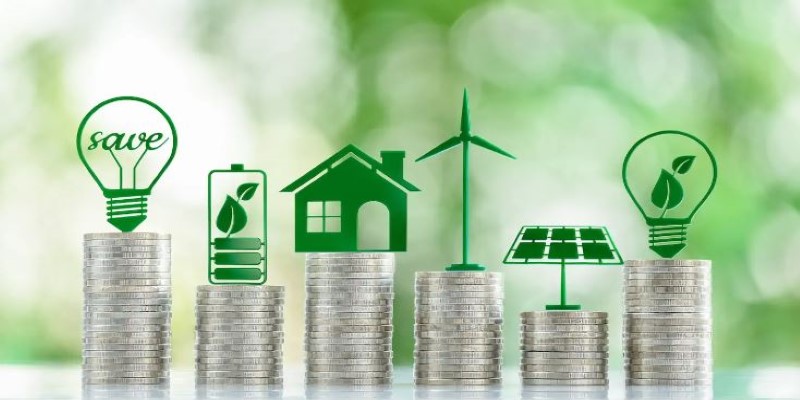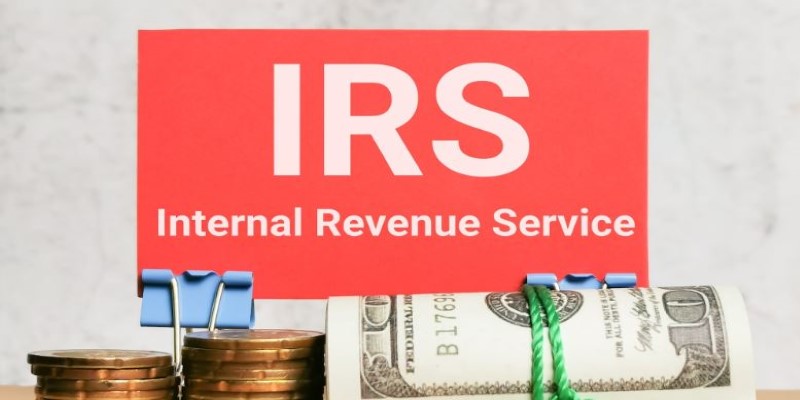Maximize Your Savings with the Energy Tax Credit: How It Works and Its Benefits
Dec 13, 2024 By Elva Flynn
Most people find the idea of reducing energy costs while doing something beneficial for the environment appealing. Thanks to the Energy Tax Credit, this concept becomes a reality, allowing homeowners and businesses to save money while improving their energy efficiency. Whether you're upgrading your home or running a commercial establishment, understanding how these credits work can lead to substantial savings.

This article breaks down the ins and outs of the Energy Tax Credit: What is it? How does it work? Types available for you to take advantage of. By the end of this, you will have a clear picture of how these credits can benefit your finances by helping the planet.
What Is the Energy Tax Credit?
Energy Tax Credit: This is a government incentive aimed at encouraging homeowners and businesses to make energy-efficient investments. Simply put, the government rewards people who reduce their energy consumption. You can get this through installments for solar panels, insulation, or other eco-friendly items.
These credits can take various forms, but the goal remains the same: to reduce the upfront cost of energy-efficient improvements, making it easier to take steps toward sustainability. Over time, savings can become significant, and credit is a vital part of promoting a greener future.
How Does the Energy Tax Credit Work?
The Energy Tax Credit works as an adjustment in the sum of tax you pay. Another very important point of difference is that whereas deductions would reduce your taxable income, a tax credit actually reduces the amount of tax you are required to pay; if you are eligible for a tax credit worth $1,000, then that amount will be deducted straight from the tax bill.

For you to reap the full benefits of the tax credit, you must demonstrate that you meet specific qualifications. In general, you need to ensure the improvements made to your property fall under a list of approved upgrades. Such upgrades may encompass energy-saving appliances or renewable energy technologies such as solar, wind, and geothermal.
Additionally, it's essential to follow all applicable guidelines to ensure that your improvements meet the requirements set by the government or the Internal Revenue Service (IRS). Depending on the type of energy-saving upgrade you're making, the tax credit is usually a percentage of the costs associated with the upgrade or a fixed amount. Once you make the eligible improvements, you can claim the credit by filing the appropriate IRS forms during tax season.
Types of Energy Tax Credits
The Energy Tax Credit isn't a one-size-fits-all program. Several different types of credits are available, each tailored to different energy-saving solutions. Here's a look at some of the most common types.
Residential Energy Efficiency Tax Credit
The Residential Energy Efficiency Tax Credit offers incentives for homeowners to make energy-saving improvements, such as installing new windows, insulation, or energy-efficient HVAC systems. It covers up to 10% of the cost of qualifying upgrades, with maximum credit limits for specific improvements, like $500 for insulation. Available to homeowners and renters, this credit helps reduce upfront costs, lower utility bills, and ease the tax burden.
Solar Energy Tax Credit
The Solar Energy Tax Credit, also known as the Federal Investment Tax Credit (ITC), allows homeowners and businesses to deduct 30% of the cost of installing solar systems. This applies to solar panels, solar water heaters, and solar roof tiles. The credit is available until 2032, with gradual reductions starting in 2033. It helps reduce the cost of solar installation and delivers long-term savings through reduced energy bills.
Geothermal Heat Pump Tax Credit
The Geothermal Heat Pump Tax Credit offers a 30% credit on the installation costs of geothermal heating and cooling systems, which use the earth's natural temperature to regulate home temperature. There is no upper limit on the credit amount, making it ideal for larger properties. This credit applies to both residential and commercial systems, offering substantial long-term savings on energy consumption and contributing to a greener environment.
Business Energy Investment Tax Credit

The Business Energy Investment Tax Credit provides up to 30% in tax credits for businesses investing in energy-efficient technologies, such as solar panels, wind turbines, and energy-efficient buildings. This credit applies to both small businesses and large corporations. It encourages renewable energy projects and energy-efficient construction, reducing financial burdens while promoting sustainability and lowering businesses' carbon footprints for a cleaner, more cost-effective future.
How to Claim the Energy Tax Credit?
To claim an Energy Tax Credit, you'll need to file specific forms with the IRS, which depend on the type of credit you're applying for. For example, homeowners seeking to claim a residential energy efficiency credit might need to file Form 5695, while businesses claiming the Business Energy Investment Tax Credit would use Form 3468.
Be sure to keep all receipts and documentation related to the improvements you made. The IRS may require proof of purchase and installation to verify that you qualify for the credit. You'll also want to ensure that the energy-efficient upgrades meet the required energy-efficiency standards as outlined by the IRS or your local utility company.
Conclusion
The Energy Tax Credit provides valuable opportunities to reduce the financial burden of energy-efficient upgrades while helping you lower your energy consumption. Whether you're installing solar panels, upgrading your home insulation, or investing in a geothermal heat pump, theres a tax credit available to assist you in making your property more energy-efficient. The types of credits vary depending on the improvements you choose to make, but they all share the same goal: to reduce your environmental impact while providing you with financial savings. By taking advantage of these credits, you not only make your home or business more sustainable but also enjoy long-term financial benefits.








